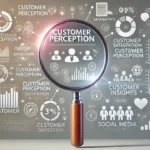Introduction
In today’s fast-paced world, businesses are constantly evolving. Now more than ever, the mantra seems to be “adapt or perish.” As a CEO coach navigating this dynamic landscape, I’ve seen firsthand how the winds of change affect different industries, especially for coaches scaling their ventures using digital marketing. Every click, every like, every share counts, and what works today might be outdated tomorrow.
The speed at which technology and consumer behaviors shift can be overwhelming. But it’s not just about keeping up; it’s about staying ahead, anticipating trends, and being agile enough to pivot when needed. It’s about understanding that change is not just inevitable but essential for growth.
For those on the path to scaling their businesses through digital marketing, embracing this fluidity can be the difference between being a market leader and being left behind. Through this post, I aim to shed light on the importance of adaptability and how we can not only manage but thrive in an ever-changing business environment. Whether you’re a seasoned digital marketer or a coach just starting your online journey, this guide will serve as a roadmap to navigate the whirlwind of change in the business world.
The Evolving Landscape of Business and Digital Marketing
In the not-so-distant past, businesses could thrive on tried-and-true models, and marketing meant billboards, radio spots, and newspaper ads. But as we transitioned into the 21st century, a digital revolution reshaped the way I, and countless others, view and approach business.
The Internet brought with it unprecedented connectivity, erasing borders and opening up global markets. Then came the rise of social media, altering the very fabric of communication and relationship-building in business. As I’ve observed over the years, digital platforms became the new town squares, places where brands and consumers interact in real-time, and where trust is built or broken in the span of a tweet.
But this digital transformation didn’t stop at social media. The increasing sophistication of data analytics allowed businesses like ours to make informed decisions based on tangible insights. E-commerce platforms democratized retail, making it possible for small businesses to compete with giants. And, the rise of mobile technology shifted focus from desktop to on-the-go engagement.
For coaches like me, who leverage digital marketing, this evolution is doubly significant. The tools and strategies that worked even five years ago might be obsolete today. Search engine algorithms change, consumer preferences evolve, and new platforms emerge, bringing with them fresh audiences and unique challenges.
However, it’s not just about the tools we use but the mindset with which we approach them. In a landscape that’s in perpetual motion, understanding the nuances of these changes and adapting to them isn’t just beneficial; it’s imperative for survival and success. As we dive deeper into this topic, remember that the goal isn’t merely to keep up but to lead, innovate, and set the benchmark for others to follow.
Why Change and Adaptability Matter
The very essence of business has always been rooted in fulfilling a need. Yet, what distinguishes successful ventures from those that fade away is their ability to perceive when these needs evolve and to adapt accordingly. As a coach who has navigated the highs and lows of the digital realm, I’ve recognized that adaptability isn’t just a buzzword; it’s the lifeblood of sustainable success.
Firstly, embracing change ensures resilience. Businesses that are rigid or too tied to a single strategy often find themselves vulnerable. A classic cautionary tale is that of Kodak, a behemoth in the photography world. Despite pioneering digital photography, they clung too long to film, underestimating the seismic shift digital would bring. The result? A descent from industry dominance to bankruptcy.
Conversely, adaptability breeds innovation. When businesses adopt a flexible approach, they become more receptive to new ideas, leading to groundbreaking products, services, or marketing strategies. They become proactive rather than reactive, setting trends rather than following them.
For digital marketers and coaches, this adaptability translates to staying attuned to changing audience behaviors, platform updates, and emerging technologies. By doing so, I’ve been able to pivot strategies seamlessly, ensuring that my message always resonates, even in a shifting digital landscape.
In essence, change and adaptability aren’t just about survival—they’re about thriving. In a world where change is the only constant, our ability to adapt determines our capacity to grow, innovate, and lead in our respective fields.
Key Traits for Embracing Change
Embracing change isn’t merely about reacting to external shifts; it’s rooted in fostering internal qualities that breed adaptability. Over the years, as I’ve guided businesses through their digital scaling journeys, certain key traits have consistently stood out as essential for anyone aiming to stay agile in this ever-evolving marketplace. Here’s a breakdown:
1. Open-mindedness:
- Being open to new ideas, even those that challenge our current beliefs or practices, is paramount. I’ve seen businesses flourish simply because they were willing to consider a different perspective or approach. This trait allows us to step outside our comfort zones and experiment with unconventional solutions.
2. Willingness to Unlearn and Relearn:
- Often, our previous experiences, while valuable, can become hindrances if they tether us to outdated methods. The digital landscape has taught me that sometimes, letting go of what we “know” and embracing new knowledge is the only way forward.
3. Continuous Learning:
- In a realm where technologies and trends can shift overnight, ongoing education is non-negotiable. Whether it’s taking online courses, attending seminars, or simply staying updated with industry news, proactive learning ensures we’re never caught off-guard.
4. Flexibility in Strategy and Operations:
- It’s essential to have plans, but equally vital to be prepared to change them. From my experience, the most successful digital campaigns weren’t those that rigidly adhered to a blueprint but those that adapted to real-time feedback and data.
5. Nurturing a Culture of Experimentation:
- A business environment where trial and error is celebrated fosters innovation. I’ve always encouraged my clients to test new tools, platforms, and strategies. Some may fail, but those that succeed often lead to breakthroughs.
6. Emotional Resilience:
- The path of change is rarely smooth. There will be setbacks, failed experiments, and unforeseen challenges. Building emotional resilience helps us see these not as defeats but as stepping stones, each offering lessons to refine our approach.
7. Staying Connected with the Audience:
- No amount of tools or strategies can replace genuine connection. By staying in touch with our audience’s needs, preferences, and feedback, we can anticipate shifts and adapt our messaging accordingly.
8. Collaborative Spirit:
- In my journey, I’ve found that diverse teams, where members bring unique skills and perspectives, are often the most adaptable. Encouraging collaboration ensures that change is not just top-down but a collective, organic process.
In essence, embracing change is as much about mindset as it is about action. As we cultivate these traits within ourselves and our teams, we set the stage for a business that’s not just reactive but proactive, not just surviving the waves of change, but riding them to new horizons.
Strategies for Coaches to Foster Adaptability in Business
The importance of adaptability is clear, but how does one actually weave it into the fabric of a business, especially in the realm of digital marketing? Over the years, I’ve distilled some tried-and-true strategies, which, when applied with dedication, can pave the way for genuine adaptability and growth. Here’s my playbook:
1. Regular Review and Update of Business Models:
- The digital realm is in constant flux, and our business models should mirror this dynamism. Every quarter, I set aside time to review and assess my strategies, ensuring they align with current trends and audience needs.
2. Promote a Growth Mindset:
- A team that sees challenges as opportunities and failures as learning experiences is inherently adaptable. By fostering a growth mindset, I’ve cultivated a culture where change is not feared but embraced.
3. Invest in Cutting-edge Tools and Technology:
- The digital marketing landscape is flooded with tools—analytics software, automation platforms, and more. While it’s not about chasing every new gadget, it’s crucial to equip your business with technologies that enhance efficiency and offer valuable insights.
4. Establish a Strong Online Presence:
- This isn’t just about having a website or social media profiles. It’s about being where your audience is and engaging them meaningfully. By diversifying my online presence across various platforms and regularly updating content, I ensure my brand remains top-of-mind and relevant.
5. Encourage Feedback and Open Dialogue:
- Adaptability thrives in an environment of open communication. By creating channels for feedback from both clients and team members, I’ve been able to pinpoint areas of improvement and act on them swiftly.
6. Stay Updated with Industry News and Trends:
- Subscribing to industry newsletters, participating in webinars, or joining digital marketing forums helps in staying abreast of the latest developments. This proactive approach ensures I’m always a step ahead, ready to integrate new insights into my strategies.
7. Collaborate with Other Industry Leaders:
- There’s immense value in collective wisdom. By collaborating with peers, whether through partnerships, joint ventures, or simply brainstorming sessions, I’ve gained fresh perspectives and innovative solutions to challenges.
8. Allocate Resources for Training and Development:
- The skills and knowledge that drive success today may not be the same tomorrow. By investing in regular training and development, both for myself and my team, I ensure we’re always equipped with the latest expertise.
9. Practice Scenario Planning:
- Anticipating potential changes and planning for various scenarios has been instrumental for me. This strategy not only prepares my business for different eventualities but also fosters a mindset of forward-thinking and preparedness.
10. Celebrate Adaptability:
- Lastly, it’s essential to recognize and celebrate moments when the business successfully adapts. Whether it’s a pivot in strategy or the adoption of a new tool, celebrating these milestones reinforces the importance of change and encourages a culture of adaptability.
By weaving these strategies into the very fabric of my business, I’ve been able to not just navigate the tumultuous waters of the digital world but also to harness its waves for growth and innovation.
Digital Marketing’s Role in Staying Ahead
Digital marketing, in my experience, isn’t just a component of modern business strategy—it’s at its very heart. This realm, with its rapid advancements and boundless potential, offers opportunities that go beyond traditional marketing. Here’s how it’s been instrumental in helping me stay ahead in this fast-paced business world.
1. Real-time Data Access:
- One of the biggest advantages of digital marketing is immediate access to data. Whether it’s user behavior on a website, engagement metrics on a social media post, or conversion rates of an email campaign, these real-time insights guide my decisions, allowing for swift course corrections.
2. Agile Marketing Strategies:
- The digital domain enables what I like to call ‘agile marketing.’ Campaigns can be tested, refined, and retested quickly. This flexibility means that rather than investing heavily in a single approach, I can experiment, analyze, and iterate, ensuring optimal ROI.
3. Emerging Platforms and Tools:
- Every year, new platforms and tools emerge, offering novel ways to engage audiences. From chatbots for instant customer service to AR experiences enhancing online shopping, integrating these innovations keeps my brand fresh and ahead of competitors.
4. Hyper-targeted Messaging:
- One of the true marvels of digital marketing is its ability to segment audiences. By understanding and leveraging this, I’ve been able to deliver highly personalized messages, leading to better engagement and stronger customer relationships.
5. Global Reach with Local Resonance:
- The beauty of the digital realm is its boundarylessness. While I can reach a global audience, tools like geo-targeting allow me to tailor my message to resonate locally, ensuring relevancy across diverse demographics.
Digital marketing is more than just a toolkit; it’s a mindset—a perspective that understands the dynamism of today’s business world and is ready to leverage every opportunity it presents. By harnessing its power and potential, I’ve not only adapted to change but have consistently been a step ahead, charting new paths in an ever-evolving landscape.
Overcoming Resistance to Change
Every journey of adaptation faces its hurdles, and resistance to change is a common one. But from my experience, this resistance, while challenging, isn’t insurmountable. First, it’s vital to understand its root—often, it’s fear of the unknown or attachment to familiar routines. To navigate this, clear communication is key. Sharing the vision, the “why” behind the change, can galvanize teams. Regular training sessions ease the transition, equipping individuals with skills to navigate the new terrain. Celebrating small wins along the way fosters a positive association with change. Ultimately, by creating a supportive environment and championing a shared vision, resistance transforms into readiness.
Conclusion
In the whirlwind pace of the modern business world, adaptability isn’t just a nice-to-have—it’s the cornerstone of sustained success. As digital realms redefine how we connect, communicate, and convert, the need to evolve becomes paramount. Throughout my journey, the lessons have been clear: Embrace change, foster an agile mindset, and leverage the vast potential of digital marketing. For fellow coaches looking to scale in this dynamic environment, remember that while the terrain might shift, the north star remains the same: understanding, connecting with, and serving our audience. Here’s to thriving in change and charting paths of innovation and growth!











